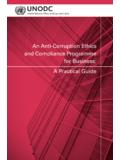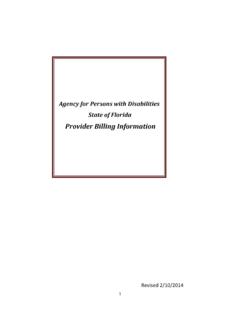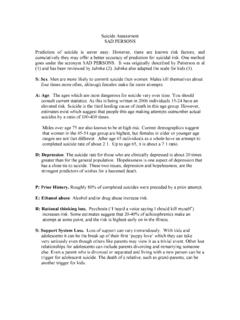Transcription of GLOBAL REPORT ON TRAFFICKING IN PERSONS
1 2014 GLOBAL REPORT ON TRAFFICKING IN PERSONSU nited Nations publication printed in MaltaSales No. December 2012 3,000 USD 22 ISBN 978-92-1-130309-4 UNITED NATIONSNew York, 2014 GLOBAL REPORT onTrafficking in Persons2014 UNITED NATIONS OFFICE ON DRUGS AND CRIME ViennaThis publication may be reproduced in whole or in part and in any form for educational or non-profit purposes without special permission from the copyright holder, provided acknowledgement of the source is made. Suggested citation: UNODC, GLOBAL REPORT on TRAFFICKING in PERSONS 2014 (United Nations publication, Sales No. ). Comments on the REPORT are welcome and can be sent to: GLOBAL REPORT on TRAFFICKING in PERSONS UnitResearch and Trend Analysis BranchDivision for Policy Analysis and Public AffairsUnited Nations Office on Drugs and Box 5001400 ViennaAustriaE-mail: (+43) 1 26060 0 Fax: (+43) 1 26060 5827 The content of this publication does not necessarily reflect the views or poli-cies of UNODC, Member States or contributory organizations, and nor does it imply any document has not been formally edited.
2 The designations employed and the presentation of material in this publication do not imply the expres-sion of any opinion whatsoever on the part of the Secretariat of the United Nations concerning the legal status of any country, territory, city or area, or of its authorities, or concerning the delimitation of its frontiers or : Alessandro Scotti, United Nations, November 2014. All rights reserved, NATIONS PUBLICATIONS ales No. : 978-92-1-133830-0e-ISBN: 978-92-1-057108-11 PREFACEThe exploitation of one human being by another is the basest crime. And yet TRAFFICKING in PERSONS remains all too common, with all too few consequences for the perpetrators.
3 Since 2010, when the General Assembly mandated UNODC to produce this REPORT under the UN GLOBAL Plan of Action to Combat TRAFFICKING in PERSONS , we have seen too little improvement in the overall criminal justice More than 90% of countries have legislation criminalizing human TRAFFICKING since the Protocol to Prevent, Suppress and Punish TRAFFICKING in PERSONS , Especially Women and Children, under the United Nations Convention against Transnational Organized Crime, came into force more than a decade , this legislation does not always comply with the Protocol, or does not cover all forms of TRAFFICKING and their victims, leaving far too many children, women and men vulnerable.
4 Even where legislation is enacted, imple-mentation often falls short. As a result, the number of convictions globally has remained extremely low. Between 2010 and 2012, some 40 per cent of countries reported less than 10 convictions per year. Some 15 per cent of the 128 countries covered in this REPORT did not record a single conviction. The pre-vious GLOBAL REPORT similarly found that 16 per cent of countries recorded no convictions between 2007 and 2010. At the same time, we have continued to see an increase in the number of detected child victims, particularly girls under 18. Most detected TRAFFICKING victims are subjected to sexual exploitation, but we are seeing increased numbers traf-ficked for forced labour.
5 Between 2010 and 2012, victims holding citizenship from 152 different countries were found in 124 countries. It should be kept in mind that official data reported to UNODC by national authorities represent only what has been detected. It is clear that the reported numbers are only the tip of the iceberg. It is equally clear that without robust criminal justice responses, human TRAFFICKING will remain a low-risk, high-profit activity for criminals. TRAFFICKING happens everywhere, but as this REPORT shows most victims are trafficked close to home, within the region or even in their country of origin, and their exploit-ers are often fellow citizens.
6 In some areas, TRAFFICKING for armed combat or petty crime, for example, are significant therefore need to be tailored to national and regional specifics if they are to be effective, and if they are to address the particular needs of victims, who may be child soldiers or forced beggars, or who may have been enslaved in brothels or sweatshops. Governments need to send a clear signal that human traf-ficking will not be tolerated, through Protocol-compliant legislation, proper enforcement, suitable sanctions for con-victed traffickers and protection of victims. I hope the 2014 REPORT , by providing an overview of pat-terns and flows of human TRAFFICKING at the GLOBAL , regional and national levels, will further augment UNODC s work to support countries to respond more effectively to this crime.
7 We have seen that governments and people everywhere are approaching human TRAFFICKING with greater urgency. This year, we marked the first ever United Nations World Day against TRAFFICKING in PERSONS on 30 July, which pro-vided a much-needed opportunity to further raise aware-ness of modern slavery. But we need to advance from understanding to undertak-ing, from awareness to action. The gravity of this continu-ing exploitation compels us to step our response. Yury FedotovExecutive DirectorUnited Nations Office on Drugs and CrimeEditorial and production teamThe GLOBAL REPORT on TRAFFICKING in PERSONS 2014 was prepared by the UNODC GLOBAL REPORT on TRAFFICKING in PERSONS Unit under the supervi-sion of Angela Me, Chief of the Research and Trend Analysis Branch.
8 Core teamKristiina Kangaspunta, Fabrizio Sarrica, Raggie design and layoutSuzanne Kunnen, Kristina and Atelier de Cartographie de Sciences Po (Beno t Martin).The GLOBAL REPORT on TRAFFICKING in PERSONS Unit would like to thank the UNODC Human TRAFFICKING and Migrant Smuggling Section, as well as the Unit s former intern Kelsey McGregor Perry for their valuable inputs and support. The GLOBAL REPORT on TRAFFICKING in PERSONS Unit would also like to thank Sheldon X. Zhang of San Diego State University for reviewing and com-menting upon draft REPORT REPORT also benefited from the work and expertise of many other UNODC staff members in Vienna and around the results 5 Executive summary 7 Introduction 15 Methodology 17I.
9 GLOBAL OVERVIEW TRAFFICKERS 23 TRAFFICKING VICTIMS 29 FORMS OF EXPLOITATION 33 TRAFFICKING FLOWS 37 TRAFFICKERS, ORGANIZED CRIME AND THE BUSINESS OF EXPLOITATION 43 THE RESPONSE TO TRAFFICKING IN PERSONS 51II. REGIONAL OVERVIEWS TRAFFICKING IN PERSONS IN EUROPE AND CENTRAL ASIA 59 TRAFFICKING IN PERSONS IN THE AMERICAS 70 TRAFFICKING IN PERSONS IN SOUTH ASIA, EAST ASIA AND THE PACIFIC 77 TRAFFICKING IN PERSONS IN AFRICA AND THE MIDDLE EAST 81 Text boxes Origin or destination country? 25 Intimate and/or close family relationships and TRAFFICKING in PERSONS offending 28 Towards a GLOBAL victim estimate? 30 Recruitment through feigned romantic relationships 32 TRAFFICKING in PERSONS and armed conflicts 42 Confiscated assets and compensation of human TRAFFICKING victims 53Do confraternities control the TRAFFICKING of Nigerian victims in Europe?
10 56 MAPSMAP 1: Share of foreign offenders among the total number of PERSONS convicted of TRAFFICKING in PERSONS , by country, 2010-201224 MAP 2: Share of children among the number of detected victims, by country, 2010-201233 MAP 3: Countries that REPORT forms of exploitation other than forced labour, sexual exploitation or organ removal, 2010-201235 MAP 4: Shares of detected victims who are trafficked into the given country from another subregion, 2010-201239 MAP 5: Shares of detected victims by subregional and transregional TRAFFICKING , 2010-2012394 MAP 6: Main destination areas of transregional TRAFFICKING flows (in blue) and their significant origins, 2010-201240 MAP 7: Citizenships of convicted traffickers in Western and Central Europe, by subregion, shares of the total, 2010-2012 (or more recent)60 MAP 8: Origins of victims trafficked to Western and Central Europe, by subregion, share of the total number of victims detected there, 2010-201263 MAP 9: Origins of victims trafficked to Western and Southern Europe, share of the total number of victims detected there, 2010-2012 (or more recent)63 MAP 10.
















